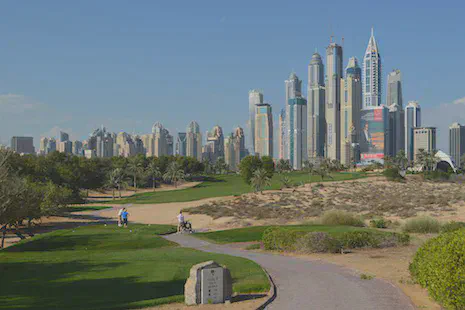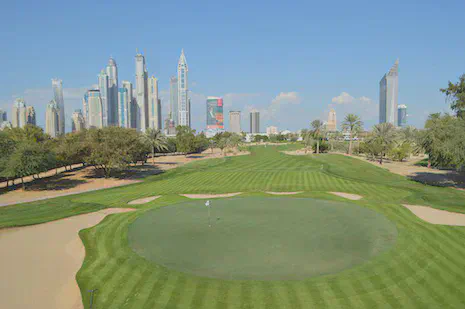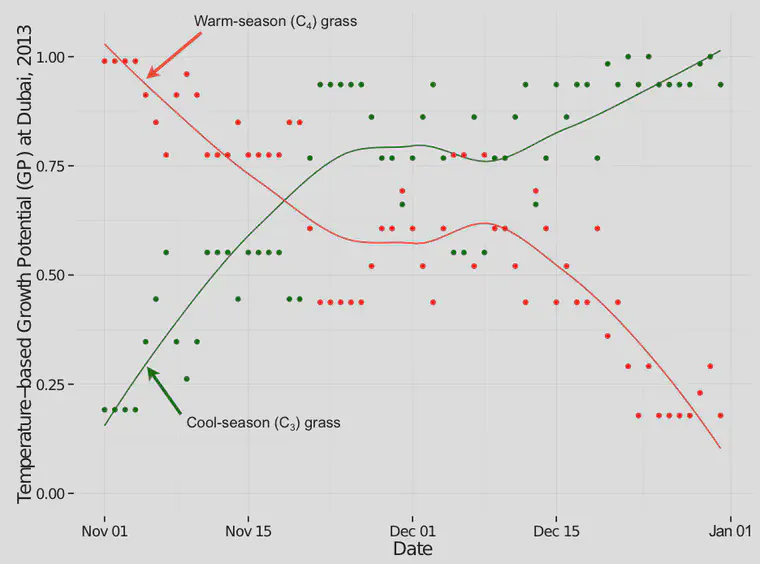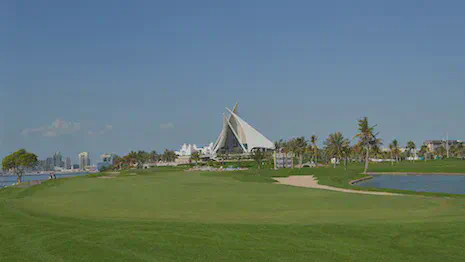Turfgrass, overseeding, and growth potential at Dubai

I had the chance to visit Emirates Golf Club and Dubai Creek Golf and Yacht Club during the last week of 2013. I saw some beautiful grass, and I was interested to learn about the overseeding that had just been completed. Most courses at Dubai are bermudagrass, although some have been planted to seashore paspalum. The seashore paspalum courses don’t seem to be overseeded, but the bermudagrass courses often are.

The Majilis Course at Emirates Golf Club hosted the Omega Dubai Ladies Masters from 4 to 7 December, and will host the Omega Dubai Desert Classic from 30 January to 2 February. There is therefore a tight window when overseeding can be done, and I was interested to see how this practical timing of overseeding (fairways and greens surrounds were seeded on 8 to 10 December, rough was seeded on 4 to 6 November) was related to the growth potential of the existing bermudagrass and the cool-season perennial ryegrass.
I’ve written a lot about a temperature-based growth potential, especially about how it is related to estimating fertilizer requirements, but the growth potential was originally developed by PACE Turf to look at timing of overseeding.
I’ve written about this as it relates to overseeding of football grounds in Japan, and I have looked up the temperature data for November and December 2013 at Dubai, to see how the growth potential was for C3 and C4 grasses.

It looks like the temperatures fortunately coincided with the overseeding time window this year. The overseed was done 8 to 10 December, and at that time, the warm-season growth potential was just above 0.5, and within a week it would move below 0.5. At the same time, the temperatures were such that from 10 December onwards, the cool-season growth potential was at 0.75 and increasing. In the rough, where the overseeding was done in early November, there was still a lot of bermudagrass in some areas, due to the strong growth of bermuda throughout November; growth potential of cool-season grass did not exceed that of warm-season grass until the 3rd week of November, and temperatures remained warm enough for bermudagrass to grow well until the end of December.
At Dubai Creek, the tees and rough were overseeded on December 9, and with that timing, the perennial ryegrass has established very well. Fairways at Dubai Creek are not overseeded but the bermudagrass retains an excellent color although the growth rate slows in the cool weather.
